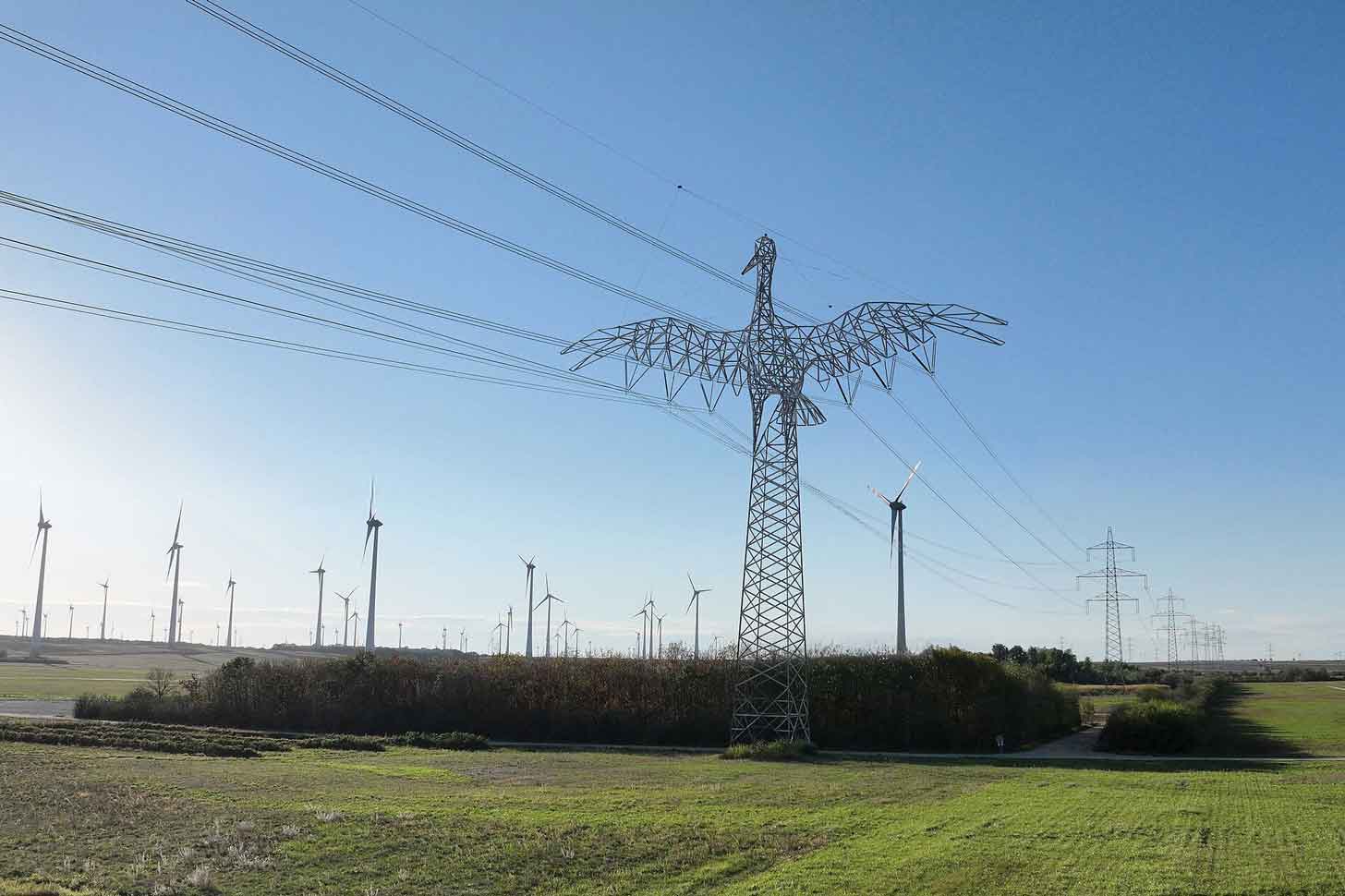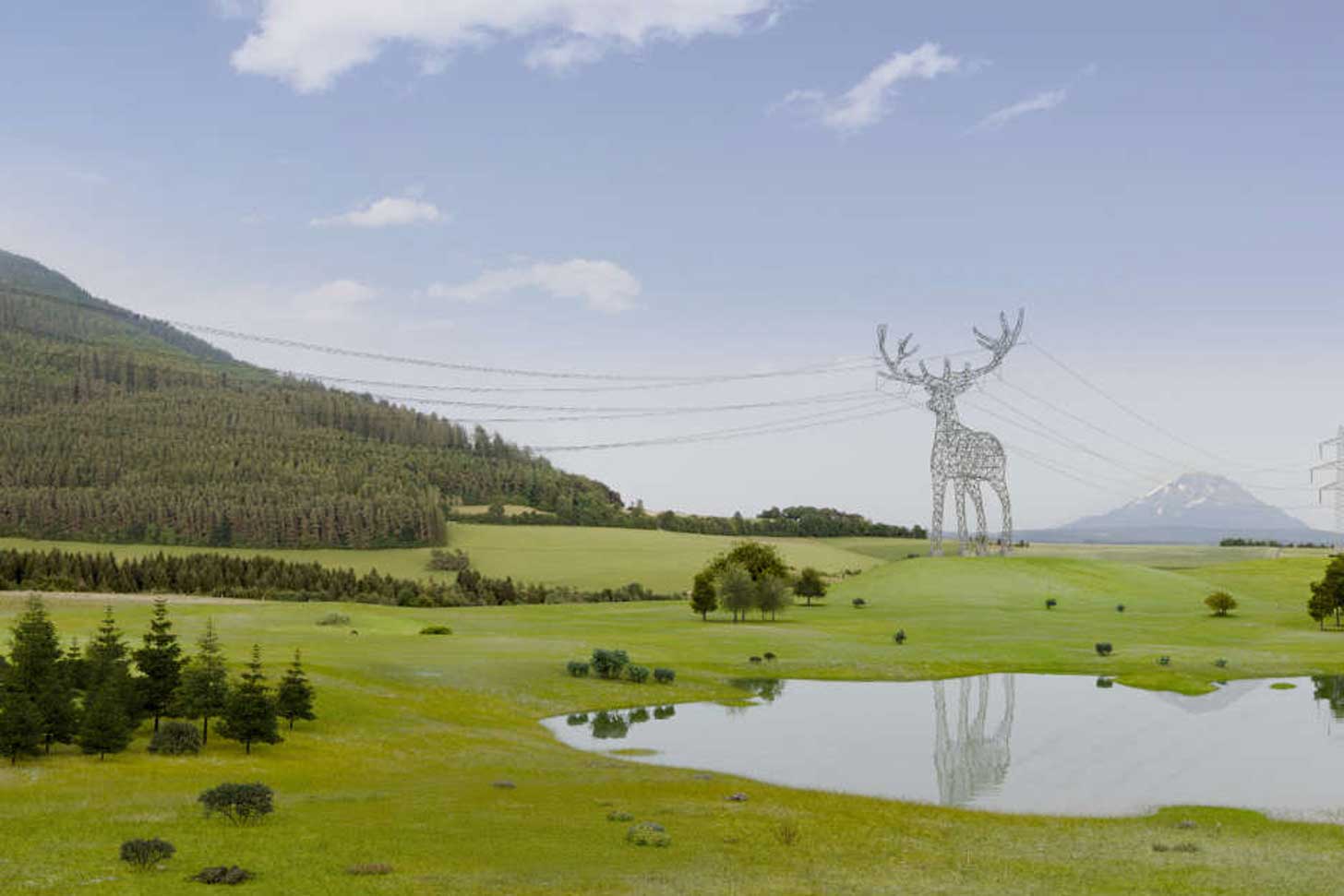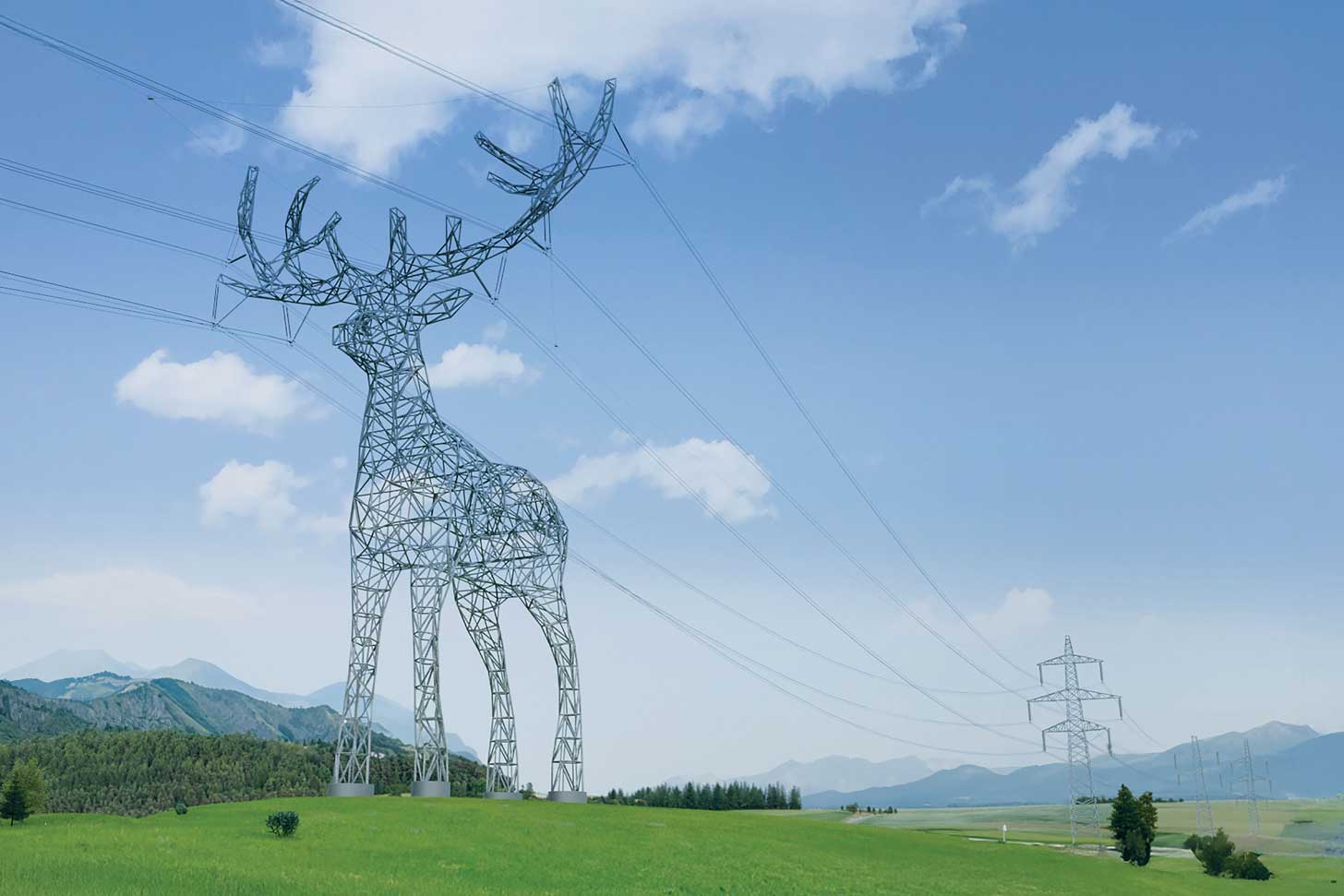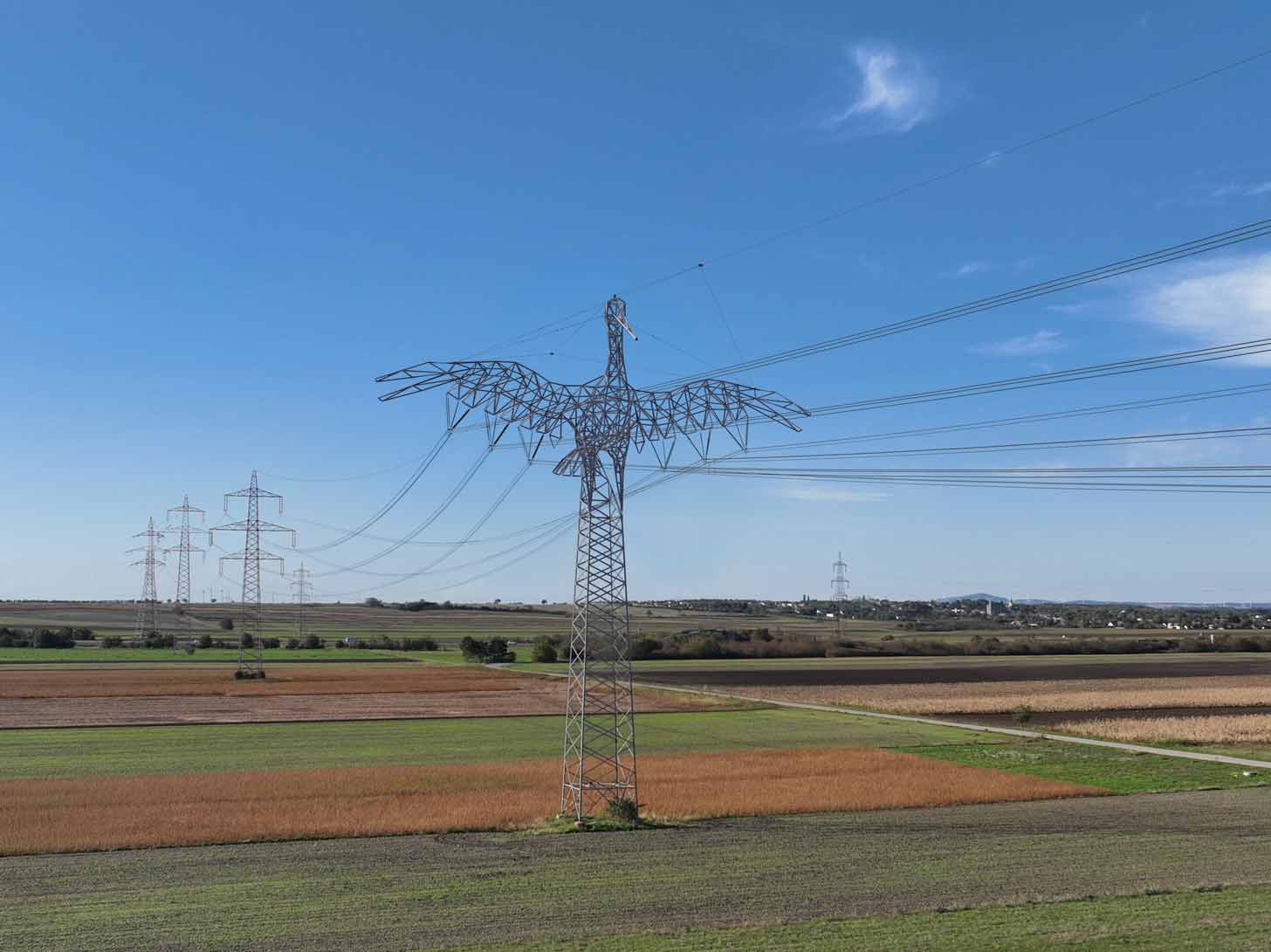As electrification infrastructure expands across Europe, Austria encountered a problem: the general public is not fond of how the new pylons — which resemble traditional power lines — look.
So, the Austrian Power Giants were born.

A concept devised by Austrian Power Grid, GP designpartners, and BauCon, these power line towers are shaped into giant animal sculptures representing nine states across the country.
There’s the stork, which represents Burgenland for its annual stork migration. And the stag, an animal symbol representing the wooded foothills of the Alps in Lower Austria.

These are the first two prototypes — which have already been developed and pre-tested for structural stability and high-voltage performance. But the plan is to install them across nine federal states: Burgenland, Carinthia, Lower Austria, Upper Austria, Salzburg, Styria, Tyrol, Vorarlberg, and Vienna.

“This nature-inspired design is ultimately intended to become a symbol for nature-friendly infrastructure projects, strengthen the economic and tourism location in the regions, and ultimately lead to increased acceptance of grid expansion projects by the general public,” a statement from Austrian Power Grid said.
This year, the design concepts won a Red Dot Design Award for Electrification and Decarbonization, and miniature models of the Austrian Power Giants are set to be on display for public viewing at the Red Dot Museum in Singapore through October 2026.

And in the meantime, stakeholders will continue testing the feasibility of implementing these awe-inspiring animals.
“The real test will be public reception once these go live. Opposition to grid infrastructure is fierce, especially in rural and scenic areas where people (understandably) don’t want their views dominated by industrial metal,” a review from Yanko Design shared.
“Austrian Power Grid is betting that regional pride and visual interest can shift that calculus. If a community sees a pylon as a landmark rather than an eyesore, the theory goes, acceptance follows.”

You may also like: Decommissioned wind turbine redesigned as eco-friendly tiny home, scalable to build '2,000 houses a year'
Header image courtesy of GP designpartners



